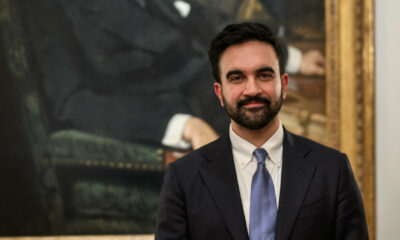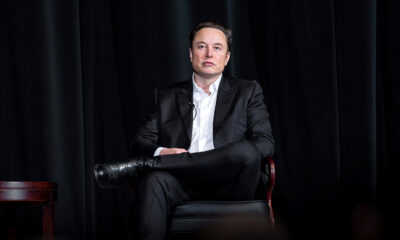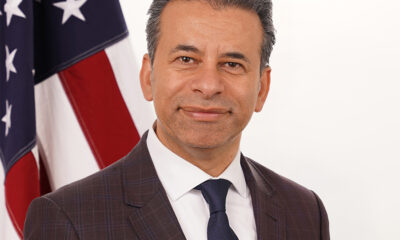Executive
Trump’s Multipronged Tariff Strategy
President Donald Trump hopes to accomplish five important things with his tariff strategy, including using tariffs as revenues.

After being criticized for saying in an October speech to the Chicago Economic Club that “‘tariff’ is the most beautiful word in the dictionary,” Donald Trump puckishly acknowledged his critics had a point about his priorities. “Let’s put God number one. Let’s put religion number two. Love, I don’t know, we gotta put that number three, I guess, right? And then it’s tariff, because tariffs will make us rich as hell!”
To some, tariff is still a nasty word
Not everyone shares President Trump’s faith in tariffs, notably the stock markets. The aggregate value of U.S. securities traded on U.S. exchanges is some $6 trillion lower after “Liberation Day,” as the administration’s calculation of the amount of the “reciprocal” tariffs caught the market by surprise.
So, what’s going on? Trump’s tariff strategy is designed to be changed and has everyone guessing. The good news here is that Trump has a powerful political incentive to turn the initial loss into a future beautiful gain.
Here’s what you need to know about the administration’s multipronged strategy:
First, Trump deploys then pulls back high tariffs in key industries for the same reason that a pitcher in baseball throws a high hard pitch at a batter’s head: to get his attention. More specifically, to get into his psyche in order to change what he does.
In Trump’s case, high hard pitches – high tariffs that are too steep to actually pay – are intended to convey to CEOs and other senior managers in multinational industrial companies around the world that they need to change how they operate and to drive them toward reinvesting in U.S. manufacturing.
Why? Trump is seeking to achieve four policy goals by pushing U.S. multinationals to reinvest in the United States – and for foreign companies to build facilities here.
Tariff benefits Trump seeks
First, the goal is to increase job opportunities for Americans while also increasing wages as demand for workers increases, and to offset the expected reduction in demand as artificial intelligence is deployed to supplement human labor. He also wants to make our nation less vulnerable to supply chains that start in places like China.
Trump is off to a strong start in this regard, as companies have pledged more than a trillion dollars in new investments into the U.S. in just the first two months of his second term in the White House.
Second, Trump deploys high tariffs to drive policy changes in our trading partners that have nothing to do with free trade per se. These changes in behavior range from curbing illegal immigration to putting more resources into interdicting the flow of deadly fentanyl into our country.
Third, Trump is deploying reciprocal tariffs specifically to incentivize other countries to reduce their tariff and non-tariff barriers to U.S. exports. Such policies reflect a shift away from America’s dominant foreign policy of the last 75 years, which prioritized buying friendship through economic aid, as exemplified by the Marshall Plan.
End to globalization – and a new source of revenue
For generations, we tolerated unbalanced trade arrangements because being generous with access to our markets served our foreign policy goals of engendering international relationships. It came at a huge cost, however, as populist politicians going back to Ross Perot have warned. Trump is the first president to seriously heed those warnings – that American workers were being squeezed out of industrial jobs, not just by lower-cost labor in developing nations, but by higher-cost labor in other developed nations whose jobs are protected by their remaining high trade barriers.
Trump hopes the “reciprocal” tariffs that shocked the markets and stunned our trading partners will open the door to more exports, in exchange for which Trump will reduce or drop the reciprocal tariffs he just announced.
Fourth, Trump sees the money raised by tariffs as an important source of revenue as he battles to attack the huge $2 trillion annual budget deficits left by his predecessor.
In 2024, the total value of U.S. imports was just over $4 trillion. Even if Trump’s tariffs cut that figure dramatically – if, say, U.S. imports are reduced to $3 trillion – a 3% tariff on the remainder would still raise $90 billion a year, offsetting much of the budget “cost” of extending the 2017 tax cuts.
An instrument of economic power
Finally, Trump loves tariffs because Congress has delegated to the president the power to create and set tariffs under statutes such as the National Emergencies Act and the International Emergency Economic Powers Act. These laws give the chief executive a big stick in foreign and fiscal policy, which Donald Trump wields energetically.
He understands our robust domestic economy vests the United States with extraordinary power. Every business of size wants – no, needs – to be in our market. The man in the Oval Office is acting like the landlord of an amazing shopping mall who recognizes that everyone who’s anyone needs to be there, so he’s increasing the rent and setting the terms to maximize the return for the folks who own and work at the mall – the people of the United States.
Trump’s tariff policy is pragmatic and populist while theoretically inconsistent. It’s of a piece with his broader attempt to rebalance the terms under which the United States deals with other nations, moving away from the post-war, subsidy-for-friends model toward an everyone-pulls-their-own-weight model, a model in which alliances are premised on shared interests instead of subsidies.
It’s Trumpian, bold, and out of the box. Let’s hope it ends up as beautiful as he promised the American people last year.
This article was originally published by RealClearPolitics and made available via RealClearWire.
Richard Porter is the National Committeeman from Illinois on the Republican National Committee.
-

 Civilization5 days ago
Civilization5 days agoOn the 2025 National Security Strategy
-

 Civilization3 days ago
Civilization3 days agoIvory Tower Thinking and Narcotics Boats
-

 Executive2 days ago
Executive2 days agoThe Last Supper: New York’s Socialist Feast
-

 Civilization2 days ago
Civilization2 days agoYoo Hoo, VP Vance—Your Character is Showing!
-

 Executive4 days ago
Executive4 days agoWaste of the Day: Shockingly, Inmate Phone Calls Lead to More Criminal Activity
-

 Civilization5 days ago
Civilization5 days agoIf Not a Musk, Then the Navy Needs Another Rickover
-

 Executive4 days ago
Executive4 days agoWH Ignores Demands From Pro Life Lobby To Fire FDA Commissioner
-

 Civilization4 days ago
Civilization4 days agoGeneral Misconduct: There Is an ‘I’ in Milley





